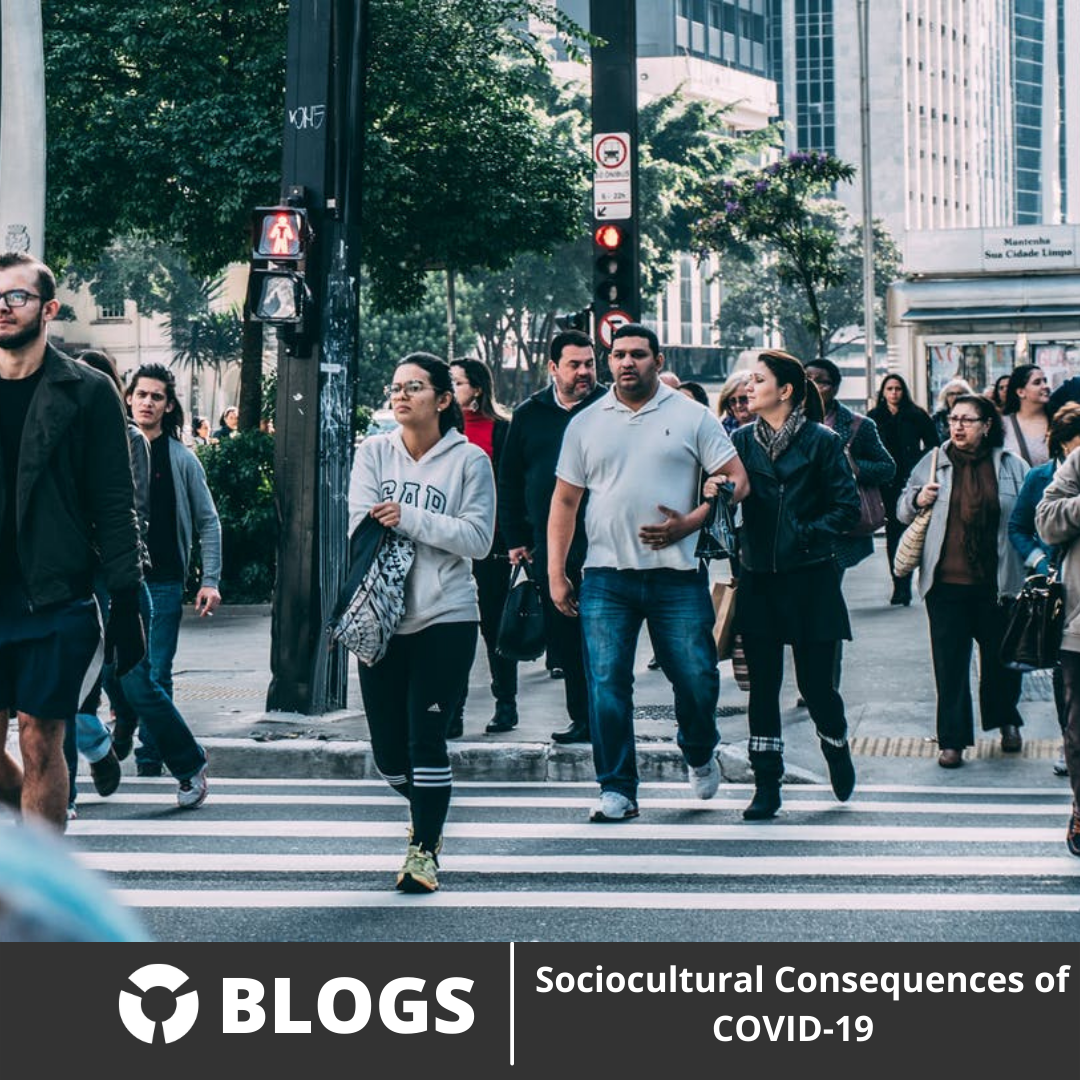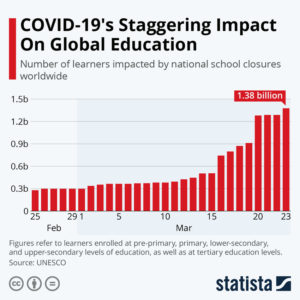
29/11/2021
“On various occasions, the phrase, ‘COVID-19 does not discriminate’ has been repeated. This, however, is a dangerous myth, sidelining the increased vulnerability of those most socially and economically deprived.”
– Patel et al., 2020
In the early days of COVID-19, when the “pandemic” was still little more than an outbreak, researchers in East Asia were debating the merits of various social measures intended to reduce community spread.
Joel Koo (2020) and his team examined the combined strategies of quarantine, school closure, and workplace measures as implemented in the city-state of Singapore. They concluded that immediate deployment of these preventative policies in concert, as opposed to the absence of intervention or the piecemeal adoption of individual public health measures, provided the optimal means to reduce transmission.
Of course, the practice of “social distancing”, as these measures have come to be known, has become so widespread throughout the world over the past two years that we no longer seem inclined to question the new order of things. It is as if we are living in a “new normal”.
In this episode, the PHI team attempts to challenge fundamental assumptions about our current circumstances, asserting that the broader social, ethical, and cultural consequences are often overlooked in our collective efforts to keep everyone “safe”.
It is a well-known fact that we live in an increasingly unequal and inequitable society. However, what many have overlooked over the course of the pandemic is the possibility that pre-existing physical and mental health disparities in between groups of different socio-economic status (SES) may be exacerbated not only by the pandemic itself, but also by flawed governance and policy measures designed to mitigate its effects.
Those who belong to ethnic and racial minorities, experience substance abuse, and/or live on a low income have become particularly vulnerable.
To begin with, social distancing measures disproportionately affect low-income individuals in an area essential to everyday life: transportation. Whereas public transit agencies have been required to limit passenger loads on buses, subways, and streetcars, the same policies are evidently not in place for privately-owned vehicles.
Many at the lower end of the SES ladder lack personal modes of transportation, and rely heavily on public transit to perform errands such as grocery shopping. Reducing access to crucial life needs will compound many of the disadvantages low-SES communities already experience.
In the realms of education and employment, the recent migration to virtual platforms may represent a sensible measure for the more affluent segments of our society. However, there is a risk that individuals in low-SES communities, who already suffer from inadequate access to digital infrastructure, will be left further behind in their pursuit of academic and professional success. This will only widen the inequity of opportunity that already presents a major roadblock to upward social mobility.
Increasing case counts have prompted policymakers to shut down services deemed “non-essential”, often in concert with a broader lockdown strategy. However, there is justified concern that marginalized and low-SES groups are being overlooked in the larger policy calculation.
When coupled with physical distancing, the closure of “non-essential” facilities such as safe injection sites, for instance, may inhibit the ability of those experiencing substance abuse from developing reliable networks of social support in order to cope with their challenges. In the absence of these resources, these individuals will likely descend further into problematic cycles, contributing to the intensification of other major public health issues such as the ongoing opioid crisis.
We live in an era of increasing social atomization. Even prior to the COVID-19 pandemic, evidence of wear and tear in our social fabric had been increasingly difficult to ignore. In light of current developments, there is concern that the practice of social distancing will only serve to expose and exacerbate pre-existing vulnerabilities in our societal systems.
It is well-known that prolonged social isolation is deleterious both mentally and physiologically (Pietrabissa and SImpson, 2020). In the shorter term, changes in sleep, diet, and physical activity puts one at an increased risk of depression. In the longer term, these patterns can give rise to heart disease, dementia, and other morbid conditions. Many victims of COVID-19 have died alone, without access to emotional support from family members.
At a macro-economic level, the shutting down of industries can result in adverse “domino reactions” that spill over across domains of business activity. When a grocery chain shuts down, for example, the effects are not solely confined to the employees who work directly in the stores, but extend to the trucking and shipping industries responsible for transporting food products across the country, and as is often the case, across the planet.

It is crucial that high public trust in institutions and policy is maintained during these difficult times. This is understandably a challenge, for two primary reasons.
First, the emergence of populism in politics and the increasing distrust in science is leading to an unprecedented level of skepticism about evidence-based interventions. With the proliferation of “COVID deniers”, “anti-maskers”, and “anti-vaxxers”, our information space is becoming increasingly vulnerable to communities that seek to confuse and mislead the public.
Second, there is the challenge of foresight. Policymakers in Canada, and much of the Western world, have operated on a largely reactive model in which strategies are applied in a piecemeal, improvisatory manner in response to the latest developments in COVID-19 transmission. In parts of Asia, however, a more proactive model of vigorous testing and contact tracing has been implemented, to a high degree of effectiveness.
While it is difficult to predict the exact course of the pandemic as it develops over time, a primary strategy of prevention, as opposed to alleviation, may deliver more optimal results. Furthermore, the struggle to exercise sufficient foresight can be perpetuated by the lack of felt immediacy in many public health measures (“not now and not me”), which can impact compliance at the individual and collective levels.
With the pandemic still in full swing, there remains no singular, definitive “solution” to the most vexing public health challenge in perhaps a century. However, it is possible for individuals and policymakers to engage in a proactive approach in order to mitigate its worst effects.
In our ongoing efforts to reduce the spread of COVID-19, it is important to ensure that marginalized, vulnerable, and low-SES communities are not disproportionately affected, that our social fabric remains resilient, and that public policy is pragmatically attuned to our current needs.
Written by: Shenbei Fan, BMSc, MPH (c)
Koo, J. R., Cook, A. R., Park, M., Sun, Y., Sun, H., Lim, J. T., Tam, C., & Dickens, B. L. (2020). Interventions to mitigate early spread of SARS-CoV-2 in Singapore: a modelling study. The Lancet Infectious Diseases, 20(6), 678–688. https://doi.org/10.1016/s1473-3099(20)30162-6
Patel, J. A., Nielsen, F. B. H., Badiani, A. A., Assi, S., Unadkat, V. A., Patel, B., Ravindrane, R., & Wardle, H. (2020). Poverty, inequality, and COVID-19: The forgotten vulnerable. Public Health, 183, 110–111. https://doi.org/10.1016/j.puhe.2020.05.006
Pietrabissa, G., & Simpson, S. G. (2020). Psychological consequences of social isolation during COVID-19 outbreak. Frontiers in Psychology, 11. https://doi.org/10.3389/fpsyg.2020.02201